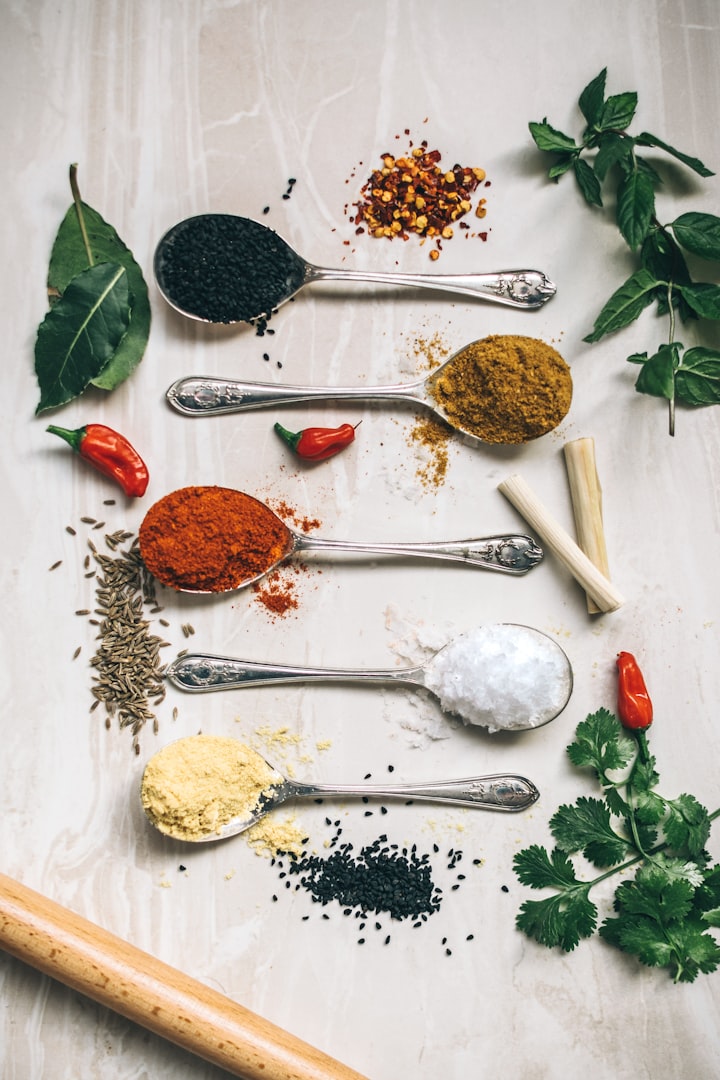Shedding Light on Asia's Controversial Practice of Consuming Live Animals
"Raw and Unconventional"

It’s important to point out that not all Asians eat raw, live animals. Actually, most Asian civilizations do not adhere to this. There are, however, a few instances in which people from particular Asian cultures may eat live or raw animals. One example is the consumption of raw fish in Japanese cuisine, particularly in dishes like sashimi and sushi. The raw fish utilized in these dishes is handled with great care to ensure its safety and freshness.
Eating live animals, such as shellfish or insects, is seen to be healthy in some regions of China. Now I want to show you some food that is eaten raw or alive.
1.Baby Mice
There is a Chinese food dish known as “Three Squeaks” that has gained notoriety due to its unusual preparation. It involves consuming a live baby mouse that has been delicately dipped in sauce. Although the practice may sound shocking to many, it is important to note that such a dish is not a common or representative part of Chinese cuisine.
The notion of consuming live animals in any culinary context is highly controversial and raises ethical concerns. It is crucial to approach cultural practices with respect and understanding, while also recognizing that certain traditions might not align with contemporary perspectives on animal welfare.
Exploring diverse culinary traditions can be fascinating, but it is equally important to distinguish between sensationalized accounts and the reality of everyday dining experiences in different cultures.
2. Sea Urchin
Uni the orange creamy part of the sea urchin has a unique umami taste that is both sweet and savory. Chefs in Italy use it as a filling for pasta while their Japanese counterparts showcase it in chirashi bowls and sashimi platters.
Although it may seem like a challenging ingredient to work with uni’s delicate buttery texture can easily elevate any dish to a new level of decadence. The most exquisite uni comes from the Pacific Ocean particularly from the waters surrounding Hokkaido in Japan and Santa Barbara and San Diego in California.
With its distinctive flavor and luxurious aura uni has become a culinary gem that is worth seeking out and trying at least once in a lifetime.
3. Soft Boiled Duck Fetus
In various cultures around the world, a fascinating culinary practice involves the preparation of a fertilized bird egg, often a duck egg. This extraordinary delicacy undergoes a unique process after being carefully incubated for a period of 14 to 21 days, depending on the specific traditions of the region.
Once the incubation period is complete, the egg is subjected to gentle steaming, preserving its natural flavors and textures. The resulting dish, known as balut, is savored by consuming the contents directly from the shell. The length of incubation plays a crucial role in the final outcome of the balut, as extended periods allow for the development of a well-formed embryo, featuring discernible traits resembling a young duckling.
This remarkable culinary experience showcases the diversity and creativity found in gastronomic traditions worldwide.
4. Raw Chicken
The world of culinary exploration has its fair share of daring dishes, one of which is the raw chicken sashimi known as “torisashi.” This particular delicacy involves the artful technique of slicing chicken that has been delicately seared on the outside, leaving the interior pink and tender.
While this practice may raise concerns for many of us due to the potential health risks associated with consuming raw poultry, it is important to note that torisashi requires precise preparation and adherence to strict hygiene standards to ensure safety.
The unique balance between the seared exterior and the raw interior creates a distinctive texture and flavor profile that captivates adventurous palates. Nevertheless, it is recommended to approach this unconventional dish with caution, as proper handling and sourcing of ingredients are paramount to a safe and enjoyable dining experience.
5. Drunken Shrimp
Drunken shrimp, also referred to as drunken prawns, holds a special place as a beloved dish in certain regions of China. This culinary delight revolves around freshwater shrimp, which can be enjoyed either cooked or raw, depending on personal preferences.
The preparation method that lends the dish its unique name involves immersing the shrimp in a fragrant liquor. This soaking process not only imparts a distinctive flavor to the shrimp but also serves a practical purpose, making the consumption of these delicate crustaceans easier. The liquor’s subtle nuances infuse the shrimp, elevating their taste and offering a delightful sensory experience.
Whether cooked to perfection or enjoyed in their raw form, drunken shrimp presents a tantalizing option for seafood enthusiasts seeking a delightful exploration of flavors and textures.
6. Octopus
This practice known as “sannakji is often enjoyed as a late-night snack with alcohol and is considered a sign of bravery and strength. However it's not without risk. The suction cups on the tentacles can stick to a person’s throat causing choking or even suffocation.
To prevent accidents the octopus is usually chopped into small pieces and served with sesame oil and soy sauce. Despite the potential dangers sannakji remains a popular dish in many parts of Asia with some restaurants even offering live octopus as a main course. For those looking for a unique culinary experience trying sannakji can certainly be a memorable experience.
7. Fish
Customers enjoy the experience of watching the fish being prepared and seeing its reaction to the cooking process.
The texture of the fish is soft and delicate with a slightly sweet flavor. The sweet and sour sauce complements the fish well and adds a tangy taste. It Is a unique dining experience that is not commonly found in other parts of the world.
However some diners may find this dish controversial due to the method of preparation. Overall the live fish dish is a cultural delicacy that has gained international attention and is worth trying for adventurous foodies.
8. Rooster Testicles
Despite being an unusual food item chicken testicles or rooster testicles are considered delicacies and are often served in restaurants across China. The preparation process for these meaty treats is not for the faint-hearted. The testicles are carefully extracted from the rooster’s abdomen while still alive and then cooked up to perfection.
While some may find the thought of eating testicles revolting others swear by this unique dish as they are said to have a rich and flavorful taste.
So if you’re feeling adventurous and up for trying something new don’t hesitate to give this unusual culinary delicacy a try during your travels in China. You might be surprised by how amazing it tastes even if it might take some getting used to!
9. Shirouo (Small Fish)
These tiny fish are a delicacy in some parts of Japan particularly in Shizuoka and Aichi prefectures. They are often served as a type of sushi known as shirouo no odorigui where the fish are still alive and placed on top of a small mound of rice.
Diners are encouraged to eat them quickly and can feel the fish wriggling in their mouths as they try to escape being eaten. The sensation is said to be both thrilling and a little unsettling for first-timers.
While the practice of eating live animals has been criticized by some animal rights activists it remains popular among some adventurous foodies who don’t mind the discomfort.
10. Larvae
Sago worm is usually found in the trunks of sago palms a widely cultivated palm tree in Southeast Asia. Sago worm is a good source of protein fat and essential minerals making it a nutritious part of the local cuisine. To prepare this delicacy sago worms are collected cleaned and then cooked in different ways.
The most common method of cooking is by frying them with spices or boiling them in coconut milk. Many people enjoy the creamy texture and nutty flavor of sago worm. However some foreigners might find the idea of eating worms unappealing.
Despite the cultural differences sago worm remains a cherished traditional delicacy in many Southeast Asian communities.






Comments
There are no comments for this story
Be the first to respond and start the conversation.